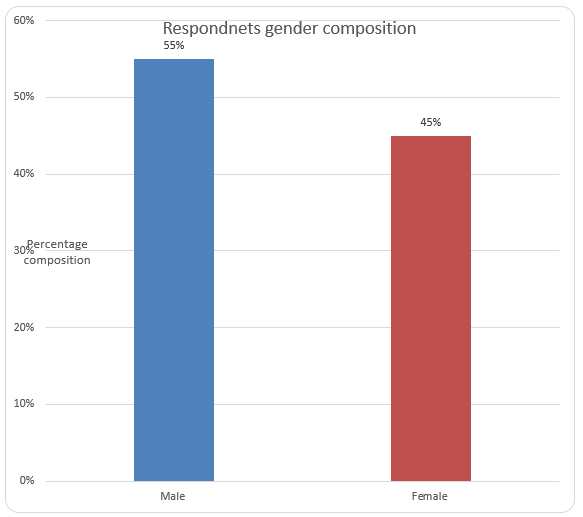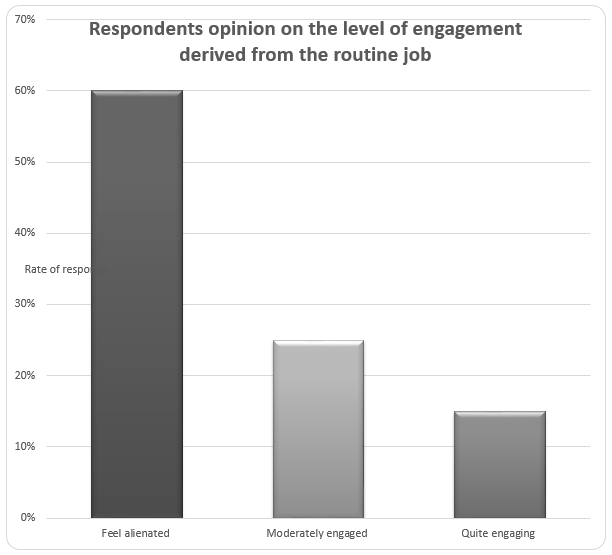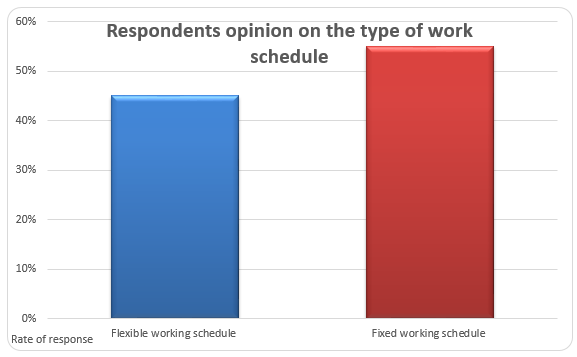Introduction
Contemporary organizations are operating in an environment characterized by unpredictable and unprecedented events arising from different factors such as market globalization and technological changes. Beltran-Martin and Roca-Puig (2013) are of the view that proficient performance “is critical in promoting competitive advantages for the modern firm considering the prevailing environmental situation” (p. 646).
Evolution in the modern labor market is evidenced by two main phenomena that include jobless recoveries and job polarisation. Jaimovich and Siu (2014) define job polarisation as a phenomenon that entails an increase in the rate of employment in the lowest-wage and highest wage levels of occupation while jobs within the middle-skill level disappear. Conversely, jobless recoveries entail “the periods following a recession in which rebounds in aggregate output are accompanied by slower recoveries in aggregate employment” (Jaimovich & Siu, 2014, p. 16).
One of the factors that have increased the rate of job polarisation entails technological advancement such as developments in computing, information communication technology, and robotics. This trend has led to a reduction in the demand for employees to perform routine tasks. The routine jobs entail tasks that are characterized by limited scope and can easily be easily undertaken by following a clear set of procedures. Moreover, the routine jobs are often repetitive and require a minimal response to external stimuli. This aspect makes it relatively easy to computerize routine jobs. Routine employments are affected adversely by economic events such as recession, and they tend not to recover (Jaimovich & Siu, 2014).
Problem statement
Despite the evolution being experienced in the modern labor market, organizations have a duty to promote high employee performance. One of the proposed approaches in promoting high employee performance is related to the integration of effective work structures that can yield high productivity. The need to promote employee productivity has led to the formulation of different techniques commonly referred to as High-Performance Work Practices [HPWPs].
The rationale for adopting the HPWPs is to improve the organizations’ capacity to cope with the evolving competitive environment. These practices are considered effective in fostering employee participation, collaboration, and learning. Different studies have been undertaken in the quest to illustrate the positive relationship between the implementation of HPWPs and employee welfare (Sgobbi & Cainarca, 2015). One of the techniques commonly being applied by firms in promoting employee productivity entails work systems or work plans. Organizational managers are of the view that the integration of work systems can contribute to improvement in routine jobs. However, the types of work plans vary across organizations.
Despite the importance of work structuring, the employee under the routine job category becomes a low-productivity employee. Additionally, routine jobs cause boredom amongst employees due to the monotony involved in performing the job tasks. Moreover, Roger (2012) asserts that such employees face a challenge due to the risk of offshoring, and they cannot be paid much. On the contrary, providing employees with an opportunity to be actively involved in the organization’s operation increases their productivity and performance.
Problem justification
In spite of the extensive association of routine jobs with low productivity, routine jobs are a common phenomenon in organizations. The presence of routine jobs arises from the high cost associated with the implementation of information technologies such as robotics in undertaking routine jobs. Moreover, the prevalence of routine jobs has been spurred by the fact that not all routine jobs can be computerized. Golden (2011) affirms that jobs can either be classified as routine-oriented or creativity-oriented. Therefore, consideration of the effectiveness of routine jobs in promoting employee performance is critical.
Research aims and objectives
This study seeks to investigate whether highly motivated employees are engaged in routine work. To achieve the research objective, the study will focus on the following objectives.
- To investigate whether routine jobs promote creativity
- To determine whether routine jobs make employees more productive
Research questions
Based on the above research objectives, the study will attempt to respond to the following research questions.
- Do routine jobs contribute to the promotion of creativity?
- Do routine jobs make employees more productive?
Research hypothesis
In responding to the following questions, the study will test the following hypothesis.
- Routine jobs do not encourage change.
- Routine jobs make employees productive.
Literature review
Work designing has gained remarkable recognition over the past decades in stimulating organizational performance. One of the primary issues that most organizations consider in designing jobs is specialization. However, effective job designing remains a challenge in organizations. Gittell, Weinberg, Bennet, and Miller (2008) is of the view that some jobs are “designed to be broad, encompassing a wide range of tasks that span entire work processes from beginning to end” (.p. 781). Conversely, some organizations adopt a narrow specialization approach in the quest to ensure high productivity.
Competing arguments on the benefits of specialized versus broad jobs exist. One of the arguments relates to the mechanistic or technical approach, while the other advocates the motivational or psychological approach (Gittell et al., 2008). The technical approach emphasizes that job design enables organizations to maximize efficiency through task simplification. On the other hand, the motivational approach contends that broad job designs are more satisfying, intrinsically motivating, and they contribute to the development of an enabling environment for working due to the high level of autonomy and feedback provision.
The routine jobs can be classified into three main categories that include routine-resource such as coal miners, routine-service [accounting clerk], and routine physical [auto assembly worker] (Roger, 2012). The increase in the intensity of competition has motivated companies to consider innovation and creativity to be a critical aspect of gaining competitiveness. Sripirabaa and Maheswari (2015) support the view that innovation increases an organization’s capacity to keep up with the changing market needs. Therefore, firms are encouraging employees to think of innovative ideas and to take a risk.
However, the likelihood of employees in routine jobs participating in decision-making and problem solving is limited. Nevertheless, Krausert (2014) argues that the efficacy of the high-involvement system in stimulating employee performance has increased substantially.
According to Roger (2012), providing employees with the chance to exercise decision-making and judgment in their job roles makes them more innovative and increases their productivity. The high-involvement system emphasizes diverse aspects such as providing employee discretion, group-level incentives, and training. The discretion can either be in relation to the work schedule. Golden (2011) posits that adopting a fixed work schedule pose in promoting employee productivity because of the constraints associated with fixed working hours or shift lengths.
Moreover, Golden (2011) asserts that flexible working schedules are mainly associated with wage premiums, which increases the likelihood of increasing the employees’ productivity. These aspects improve the degree of employee performance by increasing their motivation and providing them with an opportunity to contribute actively to the firm’s operations. Therefore, despite the decline in the number of routine jobs within organizations over the years, the relevance of routine jobs organizations operation cannot be ignored.
Research methodology
This study sought to investigate whether highly motivated employees are engaged in routine work. To achieve this goal, the study is based on the exploratory approach. Jha (2014) posits, “The objective of exploratory research is to gain insights and ideas related to a problem” (p. 106).
The study will be based on the concept of triangulation by integrating the mixed research approach. The rationale for using the mixed research design is to ensure that the research question is answered successfully through the incorporation of inductive and deductive reasoning methods. According to Sreejesh and Mohapatra (2014), the mixed research design culminates in an effective interpretation of the issue under evaluation. The mixed design will be operationalized by entrenching the qualitative and quantitative research techniques.
Data collection and sampling
The study is based on primary and secondary data collected from the field. Both primary and secondary data were collected from employees of the three companies considered in the study. The companies belonged to different industries that include the banking, manufacturing, and mining industries. The rationale for adopting primary and secondary data is to ensure that quality data is gathered hence increasing the reliability of the study.
The sample study was constructed using purposive sampling. The adoption of this technique was to ensure that the parties engaged in the study are real employees who are involved in routine jobs. A sample of 100 respondents was collected.
The data was collected by conducting a survey. The purpose of conducting a survey was to increase the likelihood of collecting substantial data to support the study. The survey was actualized by using a questionnaire as the data collection instrument. The questionnaire was effectively designed by eliminating ambiguity and administered to employees in the three organizations selected.
Data presentation, analysis, and interpretation
The raw data collected from the field might not be of significance to the target audience due to its voluminous nature. To overcome this limitation, the data collected will be effectively analyzed using descriptive and inferential statistics.
Descriptive statistics enable the researcher to condense and present voluminous data using quantitative summaries. Therefore, the descriptive statistics technique will make the research data understandable. The technique will be achieved through the integration of the SPSS and Microsoft Excel tools. Therefore, it will be possible to present the data using a combination of graphs, tables, and percentages. Subsequently, it will be possible for the target stakeholders to interpret the data effectively and efficiently.
Results and discussion
The survey questions administered to the selected respondents succeeded in generating a substantial amount of data on the research topic. The data collected illustrate the prevailing situation with reference to the nature of the relationship between routine jobs and employee performance. This chapter presents the study’s results, findings, and discussion. The analysis is based on the questions posed by the research.
Presentation of respondents’ demographic characteristics
The research respondents were characterized by varying demographic characteristics. Fifty-five percent (55%) were males while 45% were female, as illustrated by the graph below. Moreover, 100% of the respondents affirmed that their nature of work mainly entails routine tasks that follow a clearly laid out procedure.

The study further sought to understand the degree to which the respondents feel engaged and involved in the organization’s operation by undertaking their daily routines. Sixty percent (60%) of the respondents argued that they feel alienated in making critical decisions regarding their organization’s operation. On the other hand, 25% of the respondents argued that they feel moderately engaged in their organization’s operation, while 15% asserted that their routine job is quite engaging.

When asked why they feel either alienated, thirty percent (30%) asserted that their job is not challenging enough. In their opinion, the stipulated procedures make the job too mechanistic. This aspect shows that a routine job is less likely to contribute to a high level of employee motivation. Thus, the room for creativity and innovation is diminished significantly.
The research also intended to understand the effectiveness with which the organizations have implemented work structures within the routine job category. Forty-five percent (45%) affirmed that their organization had integrated flexible working schedules, while 55% argued that their work is based on a fixed work system, as depicted by the graph below. The respondents who identified fixed working hours argued that they are required to work within a specific period.
In their opinion, the respondents said that they are required to be at their workstations within the specified time of the day. These respondents further argued that the inflexibility associated with their routine job makes them less motivated and productive. Golden (2011) supports this finding by accentuating that most employees under the fixed working hours “are forced to settle for hours that are not their preferred hours because other options such as absenteeism or tardiness carry a credible risk of discharge” (p. 2).

However, the respondents’ opinions on the nature of flexible working schedules that the firms have integrated varied significantly, as revealed from the responses obtained. Twenty-three percent (23%) of the respondents who affirmed the presence of a flexible working schedule identified the part-time system, while 12% said that their work is based on the concept of job sharing. Only 10% of the respondents said that their routine job is based on the concept of telecommuting.

According to graph 4, it is evident that most routine jobs in the organizations considered in the study are based on the part-time working schedule. Moreover, the graph shows that the adoption of the concept of flexibility with regard to routine jobs is not effectively developed. From the graph, one can argue that the integration of the concept of telecommuting or working from home within the routine job category is not a common approach within organizations. Moreover, job-sharing where two employees share a particular routine job not well developed. According to Aime, Johnson, Ridge, and Hill (2010), job sharing provides an opportunity for employees to share ideas and energy. Therefore, the probability of employees under such a job arrangement being highly productive is high.
The research study also sought to understand whether employees within the routine job category feel motivated and productive in their job. Seventy-five percent (75%) of the respondents were of the opinion that they do not feel motivated, while only 25% affirmed that they feel motivated and productive. The 25% of the respondents argued that the flexibility associated with their work schedule provides convenience in addressing personal issues such as parenting and educational matters. To gain insight on the level of motivation and productivity, the study sought to explore further the response provided.
Forty percent (40%) of the respondents said that their nature of job provides minimal opportunity for personal input on issues relating to the organization’s operation. In their opinion, the respondents argued that they are required to adhere to a specified procedure. Therefore, the outcome of their job does not mainly contribute to an important aspect that the firm’s management team can rely on while making decisions relating to performance management, such as promotion.
Roger (2012) supports this finding by asserting that once a job “is defined as routine, it becomes routine and the individual in it does not exercise judgment or decision making” (par. 5). Fifteen percent (15%) of the respondents argued that the mechanistic nature of the job does not give the employees an opportunity for career progression. Conversely, 20% of the respondents argued that their job provides minimal opportunity for engagement and involvement. The respondents asserted that their input in making critical decisions and solving organizational problems was less sought.
Conclusion
The study’s findings reveal that routine jobs provide a minimal opportunity for promoting employee creativity and productivity. This assertion arises from the technical nature associated with a routine job. According to the study’s findings, most of the routine job workers who participated in the study affirmed their lack of motivation with the nature of their job. In their opinion, the respondents argued that routine jobs do not provide room for career development and progression.
This aspect arises from the repetitiveness associated with routine tasks. Moreover, routine jobs do not mainly entail solving problems. Therefore, the employees do not have discretion in responding to issues associated with their job. On the contrary, the employees have a duty to adhere to predetermined procedures in resolving work-related issues.
The study shows the existence of disparity with reference to the work schedules adopted across the different organizations. Despite the evidence of integration of flexible work schedules across the organizations considered, the contribution of the flexible schedules in promoting employee performance and productivity is minimal. This assertion arises from the view that most organizations have adopted the concept of part-time working hours. Therefore, the growth in other concepts of flexible working schedules within the organization, such as telecommuting, is not adequately developed.
In summary, the study’s findings support the hypothesis that routine jobs do not contribute to personal or organizational change. Given that it is not possible for organizations to integrate computer technology such as robotics in performing all the routine jobs, it is imperative for organizational managers to come up with the most appropriate approach to consider in motivating employees within the routine job categories.
One of the most effective techniques that firms should consider entails diversifying their approach towards flexible working schedules. Firms should consider redesigning some of the routine jobs to improve the degree of flexibility, for example, by integrating the concept of telecommuting where applicable. Alternatively, the promotion of a conducive environment for working should also entail ensuring that employees in the routine jobs are actively engaged and involved in diverse organizational processes such as decision making.
References
Aime, F., Johnson, S., Ridge, J., & Hill, A. (2010). The routine may be stable, but the advantage is not: competitive implications of key employee mobility. Strategic Management Journal, 31(75), 75-87.
Beltran-Martin, I., & Roca-Puig, V. (2013). Promoting employee flexibility through HR practices. Human Resource Management, 52(5), 645-764.
Gittell, J., Weinberg, D., Bennet, A., & Miller, J. (2008). Is the doctor in a relational approach to job design and coordination of work. Human Resource Management, 47(4), 729-755.
Golden, L. (2011). The effects of working time on productivity and firm performance; a research synthesis paper. Web.
Jaimovich, N., & Siu, H. (2014). Demographics, job polarization, and macroeconomic analysis of labor markets. NBER Reports, 3(9),10-17.
Jha, A. (2014). Social research methods. New Delhi, India: McGraw-Hill Education.
Krausert, A. (2014). HRM systems for knowledge workers; differences among top managers, middle managers, and professional employees. Human Resource Management, 53(1), 67-87.
Roger, M. (2012). The US needs to make more jobs more creative. Web.
Sgobbi, F., & Cainarca, C. (2015). High-performance work practices and core employee wages; evidence from Italian manufacturing plants. International Labour Review, 68(2), 426-456.
Sreejesh, S., & Mohapatra, S. (2014). Mixed methods research design; an application in consumer-brand relationships. New York, NY: Springer.
Sripirabaa, B., & Maheswari, T. (2015). Individual creativity; the influence of job autonomy and willingness to take a risk. SCMS Journal of Indian Management, 2(6), 110-130.